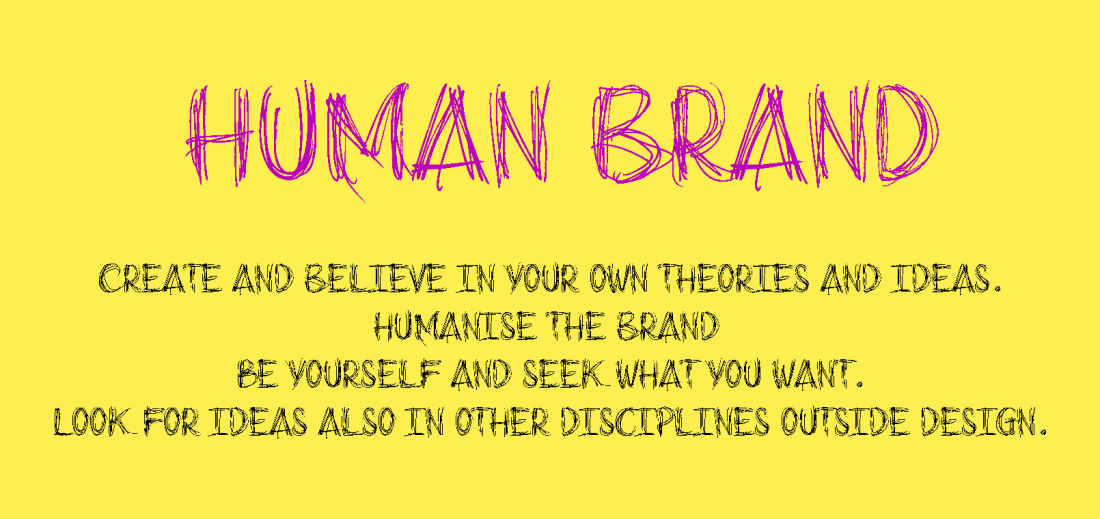
What is the ethic brand? why does is matter?
If it is true that branding helps to define who we are, what we do, and how we relate to the world, I believe that in recent years we haven’t done enough, or at least we have’nt done it in the right direction with what is happening around us. The fight against climate change, the search for greener technologies to save the environment, green food, green power are just a few examples of how much we talk about awareness and respect for nature and what we could do in the next years.
Brand strategy is full of concepts like vision, mission, values of a brand, sometimes writing made up stories to stand out and be seen in the market. In addition, through digital platforms we receive a lot of similar information and it is difficult to stand out.
Today branding is also changing and brand designer are moving towards a greater awareness where the perception of the value of a brand is not only about what you do, but also who you are and what is your vision in the world, why you exist and what you do in this world to keep your promise if you want to shout it to the world.

While it is true that branding helps to define who we are, what we do, and how we relate to the world, I believe that in recent years we have not done enough, or at least our efforts have not been in the right direction and in tune with what is going on around us.
The fight against climate change, the search for greener technologies to save the environment, green food and green power are just a few examples of how much we are talking about awareness and respect for nature and what actions we could take in the coming years.
Today, branding is also changing and brand identity managers are moving towards a more conscious brand, where the perception of brand value is not only about what you do, but also who you are and your worldview, why you exist and what you are doing in this world to keep your promise, should you decide to broadcast it to the planet.
Today’s brand strategy is packed with concepts like vision, mission, the values of a brand, perhaps even writing made up stories to stand out and be seen in the market. Through digital platforms, we receive an onslaught of information, which is sometimes very similar, from which it is difficult to stand out.
We need to believe in something more authentic and profound, where exploiting a brand means immersing yourself in its world, where each activity involves every sense and contributes to generating authentic emotions and atmospheres.

So what is the right way to create a brand today and how should it be communicated?
Until now, brands have focused on a specific business, communicating only about that. For instance, if you are in the health and beauty business, you will only want to talk about that, or if you are a quality fashion brand, you will be known for the design of your clothes and that’s all. Your business is your only concern and you have no interest in relating to your customers or being their friend.
You are a professional and you are good at what you do. Your strategy and graphic identity will be designed so that this image reflects your objectives and becomes the best in your business.
Today things are changing and we are moving towards a more human approach to the brand. This means creating a brand with multiple facets and different aspects that allows you to change and evolve along the way. If you have a great idea, you have to express it in a deeper and more authentic way.
The brand must relate to customers like a human being who is an expert in something he wants to share and sell. We need to understand customers’ gaps and fill those gaps with what we offer, recreating experiences that will solve their problems.
Those who seek you out choose you not only because of what you do but also because of who you are. Every activity is an experience for the brand and they will never get bored with you. People who choose the human touch are usually non-conformists, free spirited, bold and determined. Showing multiple facets of your brand will be your mission.
Up to now, brands have been perceived as figureheads but have remained distant, while human brands are perceived as approachable and possible models in full harmony with the customer.
Which approach should you choose?
It depends on the client and what they want to communicate.
For example, creating an identity for an event will take many aspects into account: atmosphere, food, music, aromas, colours, the welcome slogan.
Creating a brand – whether for a product, an event or a company – has to be one big immersive journey and creating a visual identity has to be an emotional experience, consisting of colours, signs, images and emotional relationships with the customer. If the human approach is chosen, it cannot be heartless.
4 Tips to create the human brand
Humanise the brand
Be yourself and seek what you want.
Create and believe in your own theories and ideas.
Look for ideas also in other disciplines outside design.
The brand designer will create all this. Their task will be to transform ideas, ideals and emotions into design by creating a characterising identity and to contribute by becoming a collaborative partner to make the brand stronger, more versatile, more lasting and recognisable.

No Comments